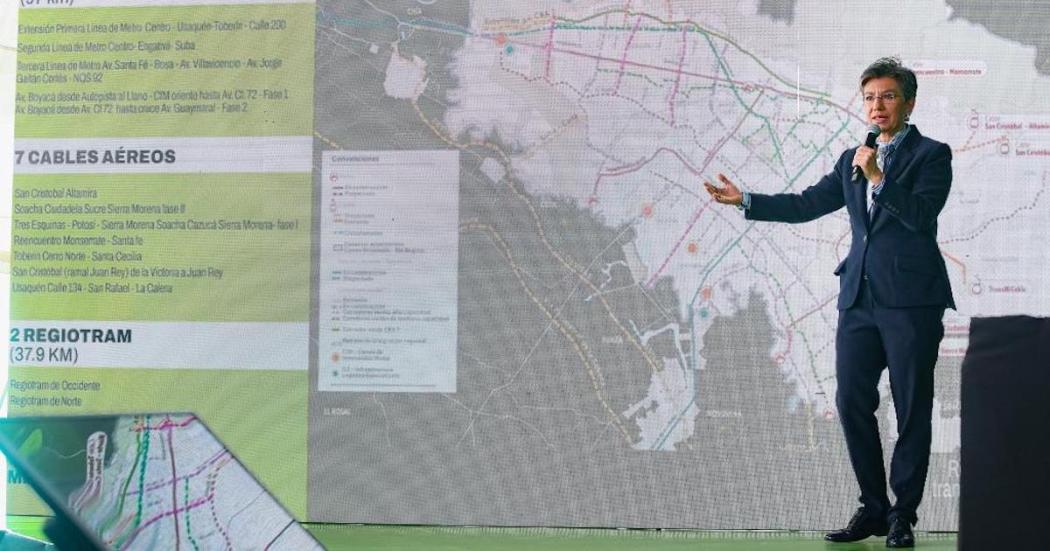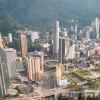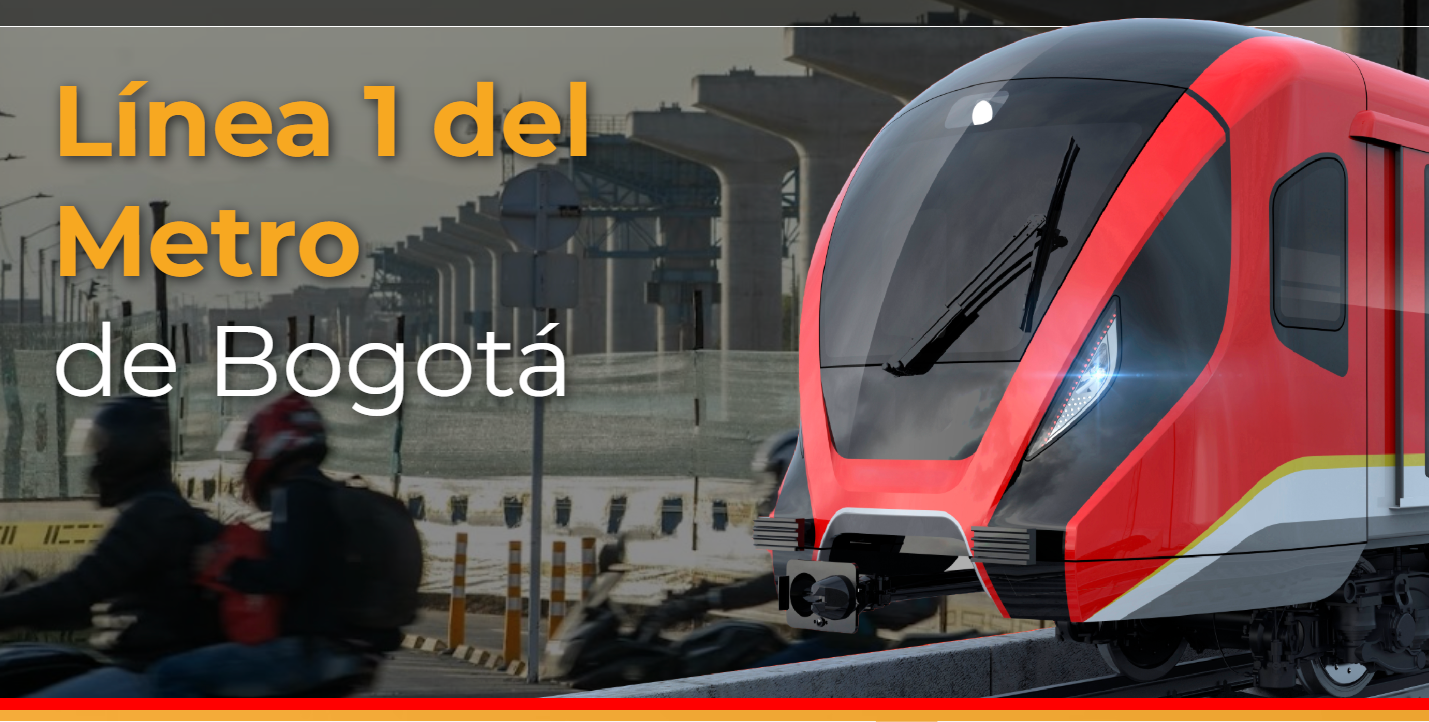One of Mayor Claudia López's main goals is to improve mobility in Bogota in response to the demand from citizens for decades; a public transportation system that reduces travel times in the city and is also complemented by other sustainable mobility alternatives.
This is why the Mayor's Office is executing an ambitious works plan throughout Bogotá to improve the quality of life of its inhabitants, with sustainability as the primary factor considered in the development, implementation, and progress of these projects.
"Bogota is a leader for having clear goals in environmental care with the Climate Action Plan, greening, waste management and transition to sustainable mobility with Metro lines, electric fleet, commuter rails, cables, green corridors and hundreds of kilometers of bike paths. Today Bogotá has a great infrastructure and sustainable mobility plan", said the mayor.
Contenidos relacionados
The following tweet by the mayor refers to the resources that will be dedicated to various mobility works in the city:
Construimos visión de movilidad de Bogotá-Región a 2050 con sistema público multimodal basado en Metro, así cambiamos visión que predominó +de 25 años y que nos ha atrasado:la movilidad dependía de carros, buses y TM. Aquí proyectos de Borde Centro/Oriental👇 #MovilidadSosteniblepic.twitter.com/7sjMFo9Y0g
— Claudia López Hernández (@ClaudiaLopez) January 30, 2023
Entrances and exits of Bogotá
The Mayor of Bogotá is implementing 4 mega projects aimed at reducing traffic congestion at the entrances and exits of the city, to improve the flow of vehicles on these roads that connect the capital with other regions.
These projects include the expansion of Carrera Séptima, the southern ALO, the new Calle 13 and the expansion of Autopista Norte. Likewise, this administration plans to extend Calle 63 to Funza, which will become a new access to the city.
Another road that will enhance mobility in Bogotá is the ALO Centro, a new four-lane corridor with a length of 6 kilometers, extending from Calle 13 to Calle 80.
These projects also have a significant component of expanding bike paths, sidewalks, and pedestrian areas, encouraging the use of bicycles, and improving pedestrian mobility.
Aerial cables
The Mayor of Bogotá considers aerial cables as one of the most important initiatives to improve mobility in four areas of the city that are difficult to access. For this reason, the construction of three of these cables is planned: San Cristóbal, Potosí, and Reencuentro - Monserrate, which will consist of two lines.
Seventh Green Corridor
In 2025 Bogotá will have the first green corridor in the country, which will run along Carrera Séptima, from 24th Street to 245th Street. Additionally, 22 high and medium-capacity green corridors will be built in Bogota.
This project, co-created with the citizens, integrates environmental guidelines and clean mobility in one of the most important roads in the city. Carrera Séptima will be transformed into the linear park and forest that Bogotá's citizens long for.
Commuter rail
Another of the major sustainable mobility projects of Mayor Claudia Lopez's administration is the construction of two commuter rails, the western and northern.
On December 21, works began on the Western Commuter rail, which will be the first inter-municipal public transport train in the country and will connect Facatativá, Madrid, Funza and Mosquera with Bogotá in 45 minutes. It will have 39.6 km, 17 stations - 9 of them in Bogotá, 2 yards, 1 workshop and 18 trains. Currently, studies are being carried out to improve the NQS, 68, and Boyacá stations so that they are located on the current and future corridors of the Transmilenio system.
In this tweet, the mayor, Claudia López, refers to the start of construction on the Western Commuter rail, the first regional and suburban electric train in Colombia:
El Regiotram de Occidente es la obra de transporte público más importante de Bogotá-Región! La construcción del primer tren eléctrico regional y de cercanías en Colombia ya empezó y estará en servicio en 2026.#RegiónMetropolitana con un sistema de movilidad sostenible e integrada pic.twitter.com/aiveBzfdpW
— Claudia López Hernández (@ClaudiaLopez) December 21, 2022
The Northern Commuter rail will have a length of 48 km, of which 25 are in Bogotá and 23 are outside Bogotá. The project foresees the construction of a light rail system, electrically powered, whose route will run along the strip of the old rail corridor from Zipaquirá to Bogotá.
It will have 10 stations in Bogotá and 4 outside Bogotá that will be confirmed with the result of the feasibility study, which will be ready in the first half of 2023, complying with all the requirements for its co-financing.
Electric Public Transport Fleet
To date, 1,485 100% electric buses of the Integrated Public Transportation System circulate in the Colombian capital, the total electric fleet that this administration set as a goal to deliver. The operation allows the reduction of about 40 tons of particulate matter annually, which would be emitted by all private vehicles circulating in Bogotá in two months.
Recently, the Mayor's Office of Bogota delivered the largest electric bus yard in Latin America, located in the borough of Usme. 229 zero-emission buses were also delivered, which will benefit 42,379 users, mainly from the boroughs of Usme, Tunjuelito, Rafael Uribe Uribe, San Cristobal, Kennedy and Barrios Unidos.
In the following tweet, the mayor highlighted the environmental benefits of La Rolita, the first public transport operator whose fleet of buses is completely electric:
Hoy cumplimos una promesa más: ‘La Rolita’, el primer operador público de Bogotá, inicia operación con 195 buses cero emisiones junto con el noveno patio 100% eléctrico.
— Claudia López Hernández (@ClaudiaLopez) September 30, 2022
Así completamos 1.485 buses cero emisiones en la ciudad y dejamos de emitir 94.300 toneladas de CO2 al año! pic.twitter.com/dmhOxlGzh1
Climate Action and Environmental Awards
Bogotá has become an international reference for its 2020-2050 Climate Action Plan, which to date is being executed with excellent results and significant advances to counteract climate change.
"Bogotá is committed to being a greener, cleaner, and more sustainable city. Its Climate Action Plan works on the implementation of a sustainable multimodal mobility system, territorial greening, and modernization in waste management," said Mayor Claudia López.
For Mayor Claudia López, the greening of Bogotá is a priority, which is why she has a goal of planting 802,000 new plant individuals during the four-year term, distributed between the Environment Secretariat (450,000), the Botanical Garden (305,000), and the Aqueduct (47,000).
These initiatives have been awarded with regional and global awards, highlighting the city's progress and projects in sustainable mobility, greening, pollution control, and environmental conservation.
We share the transmission of the intervention of the mayor, Claudia Lopez, during the second day of the Sustainable Mobility Week 2023, in which she gives details of some of the main mobility projects that are being developed in the Colombian capital:





